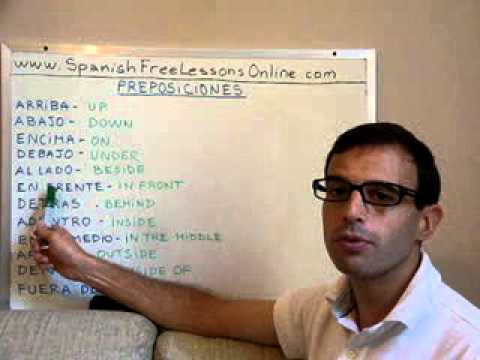Spanish Prepositions
Prepositions are used to indicate and specify a relationship between two words.
The above is the simple definition of prepositions. However, there is nothing better to understand what a definition means than seeing some examples.
Most common Spanish prepositions
- arriba – up / upstairs
- abajo – down / downstairs
- encima – on
- debajo – under
- al lado – beside
- enfrente – in front
- detrás – behind
- adentro – inside / indoors
- en el medio– in the middle
- afuera – outside / outdoors
- dentro de – inside of
- fuera de – outside of
Simple sentences using the aforementioned Spanish prepositions
- El libro está arriba – The book is upstairs.
- La revista está abajo – The magazine is downstairs.
- El teléfono está encima de la mesa – The telephone is on the table.
- El gato está debajo de la silla – The cat is under the chair.
- La televisión está al lado de la biblioteca – The television is beside the library.
- Juan vive enfrente de mi casa – Juan lives in front (accross the street) to my home.
- Detrás viene Carlos en su auto nuevo – Behind comes Carlos in his new car.
- Mariana está adentro – Mariana is indoors.
- El perro está afuera – The dog is outdoors.
- El ratón está dentro de la caja – The mouse is inside the box.
- El ratón ha saltado fuera de la caja – The mouse has jumped out of the box.
Pay attention at my Spanish pronunciation when you watch the video-lesson.
I recommend all my students that follow my online courses to do the exams that I upload to my website. The topic of this lesson (Spanish prepositions) is included in Spanish Quiz Nbr. 5 (lessons 27 – 34).
You can find a full list of all the video lessons by clicking on the List of Lessons tab on the Main Menu.
To enlarge the video-screen to full-size, click on the right icon on the lower right corner of the video.













